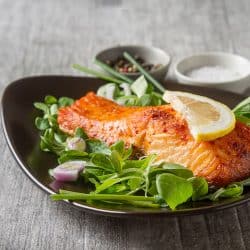Not only is salmon a superfood, it's a super-easy dinner idea! Arguably, the simplest way to prepare these fishy fillets is to pop them in the oven. However, if you've never baked salmon before, you probably have a few questions about how to heat it. Most significantly, how long should you keep those salmon fillets in the oven? If you're new to baking salmon, then you've got to check out the research we've done on this topic.
Salmon fillets that measure one-inch thick usually take about eight to ten minutes to bake in a 425° F oven. Typically, chefs recommend baking your salmon for about four minutes for every half-inch at the salmon's thickest part. To be precise, use a meat thermometer to gauge the temperature at your salmon's thickest point. The USDA claims a salmon should register 145° F before eating.
Adding salmon to your recipe roster is a great way to add a boatload of nutrition into your family's bellies. However, you need to know how to heat this fish to avoid under or overcooking it. Please keep reading to figure out how to bake a yummy salmon meal.

How Long Do You Bake A Salmon?
To figure out how long to bake your salmon, you have to ask yourself two questions. First, how thick are your salmon fillets? Second, how precise is your oven's temperature?
Unsurprisingly, the thicker a salmon fillet is, the longer it will take to bake. Most chefs recommend giving salmon four to six minutes for every half-inch at its thickest part in a 400° F oven. This means if your fillets are about one inch thick, you should check them after about eight to twelve minutes.
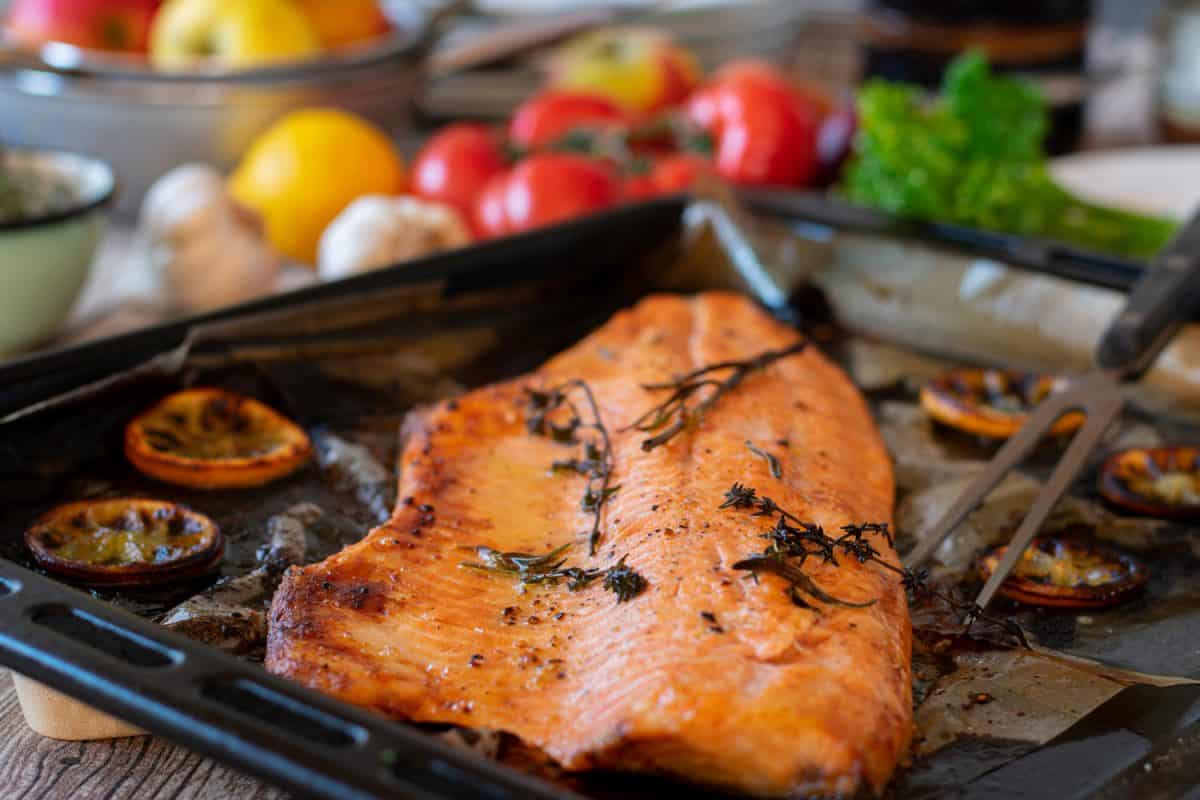
While this is a good general strategy for baking salmon, please don't forget to factor in your oven's accuracy. You should also consider whether you have a convection oven or not. Generally, convection ovens cook faster than non-convection units.
If you'd like to learn more about adjusting temps for different ovens, you should check out our post, "Do Convection Ovens Bake Faster?"
For more tips on baking a classic garlic-lemon salmon, be sure to watch this video:
What Temperature Should Salmon Be Cooked At?
Many baked salmon recipes recommend setting your oven to around 425° F. However, if you have thinner slices—or you're using a convection oven—you may want to tone down your oven's temp to 350° F - 375° F.
Since salmon is so delicate, it cooks fast. To avoid overcooking your salmon, you need to stay nearby and monitor your fillets. Please don't forget to set your timer when baking this fish!
Find out more on this Amazon link.
For an example of how to bake salmon at a lower-than-average temp, check out this YouTube tutorial:
Do You Have To Cover Salmon In The Oven?
You don't have to cover salmon in the oven. In fact, some chefs prefer putting their salmon in the oven uncovered. It all depends on what kind of texture you're trying to achieve with your fillets.
When you wrap salmon fillets in foil, it will trap steam. Some people argue this helps the salmon cook evenly and adds extra moisture to your meal. However, others complain that wrapping salmon in foil makes their fish feel mushy.
Honestly, you can't go wrong whichever way you choose to bake your salmon. However, if you're using a lot of sauce on your salmon, it may be better to bake it in a foil boat just to make clean-up easier. Be sure to experiment with both covered and uncovered salmon to find what texture works best for you.
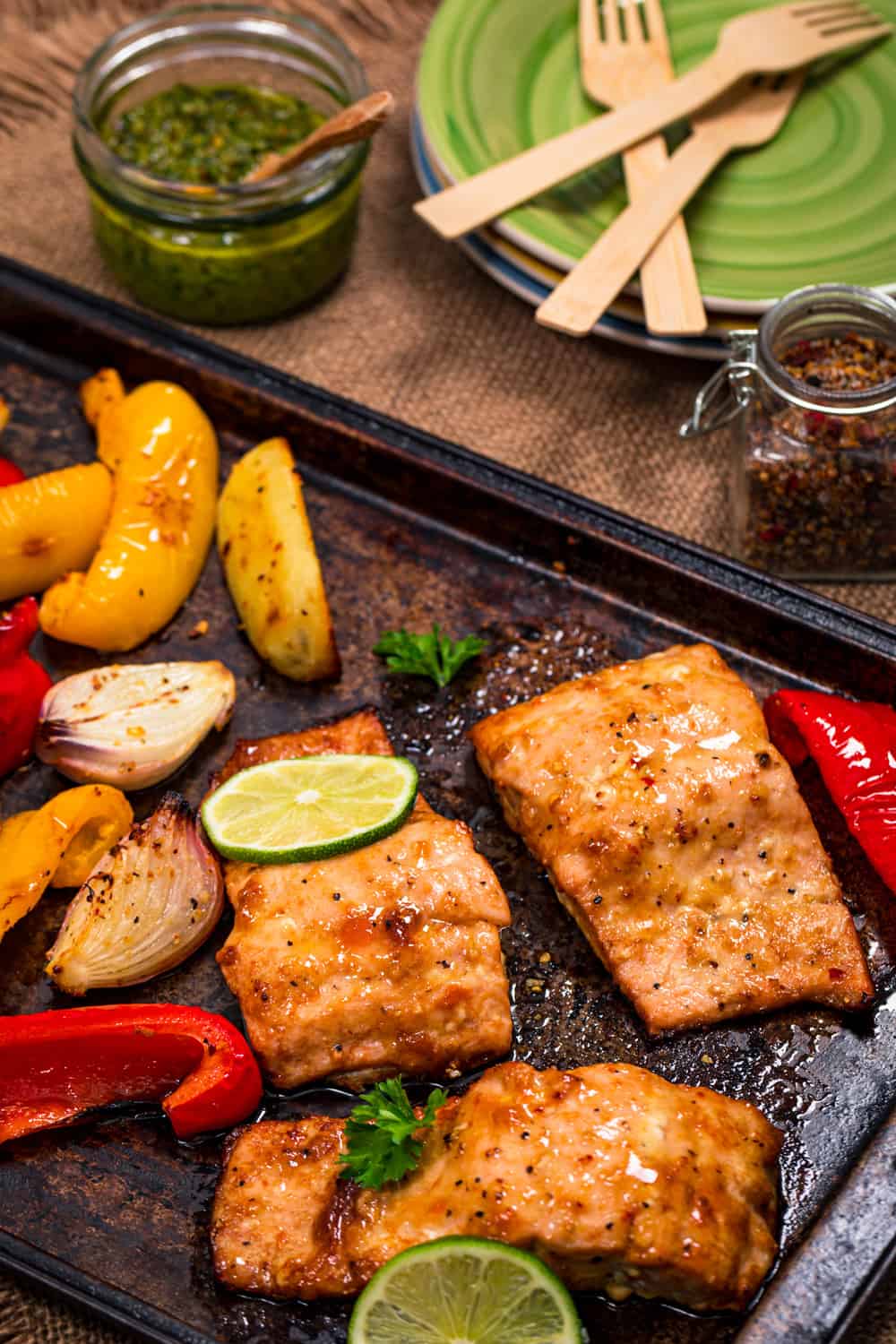
If you'd like to learn more about what happens when you cover food, you need to check out our post, "Should You Bake Potatoes In Foil?"
How To Bake Salmon In Foil?
Here's a bare-bones guide to cooking a salmon fillet in foil:
- Preheat your oven to 400° F.
- Take your salmon out of the fridge and let it sit at room temperature for about 20 minutes.
- Place enough aluminum foil to cover your salmon on a baking tray.
- Brush olive oil on your aluminum foil.
- Place your salmon fillets skin-side down on the foil.
- Brush your salmon fillets with about one tablespoon of olive oil.
- Season with salt and pepper.
- Place a few quartered lemon slices on the side of your pan.
- Wrap foil around salmon fillets to cover them.
- Put your salmon in the oven and check after about ten minutes.
- Serve once salmon registers 145° F and flakes easily.
While this recipe will work in a jiffy, chances are you'll want to spice up your salmon with extra flavors. For a more elaborate salmon in foil recipe, be sure to watch this video:
How Do You Know When Salmon Is Done In The Oven?
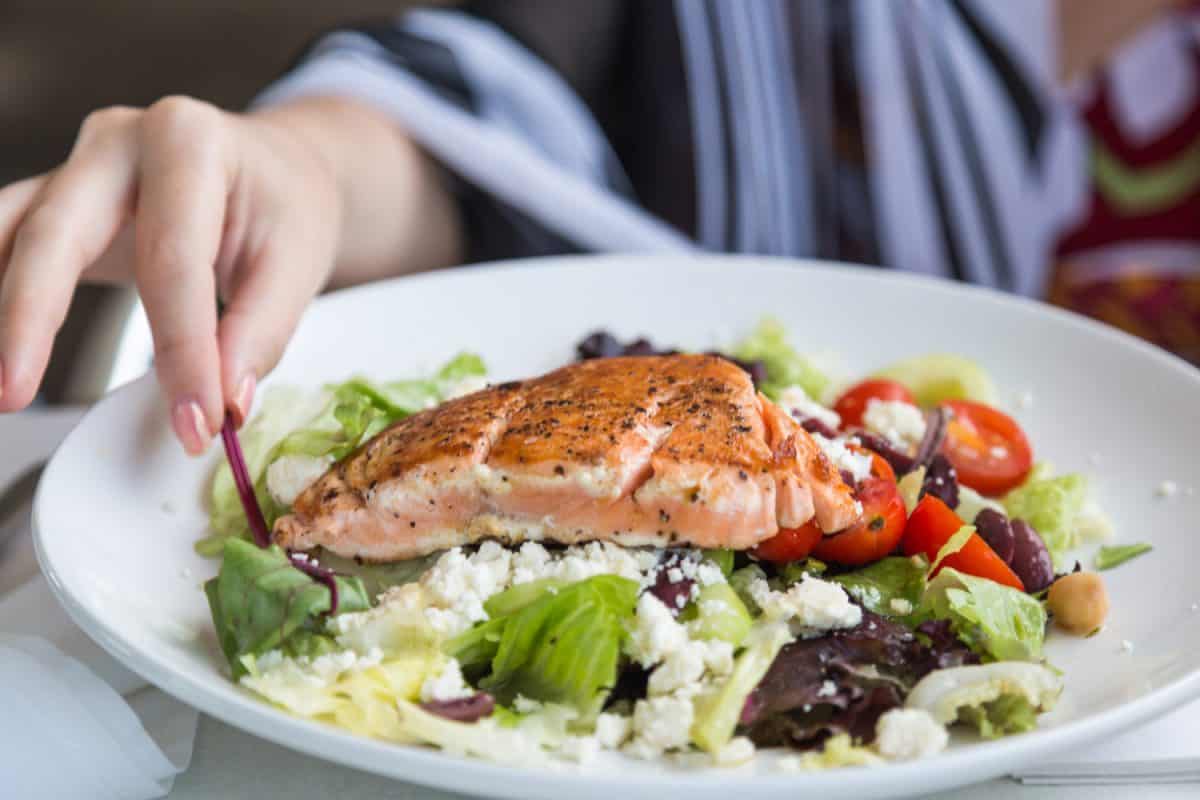
The precise way to know when salmon is done is to use a trusty meat thermometer. Stick this device in the salmon's thickest part and examine the temperature. According to the USDA, cooked salmon should register 145°F.
Find out more on this Amazon link.
While using a thermometer is the best way to determine a salmon fillet's doneness, there are a few key signs your salmon is done. Most notably, when a salmon fillet is finished, it should flake off when you run a fork through it. You may also notice the salmon's pink flesh turning whitish. Both of these are signs your salmon is ready to eat.
Should You Bake Salmon With The Skin On?
People who've never eaten salmon before may feel iffy about leaving scaly skin on their food. However, most kitchen pros encourage home cooks to leave the skin on their salmon. Not only is the skin edible, but it also contains a lot of nutrients. Many people also enjoy the crispy texture salmon skin adds to their dishes.
To make the most out of salmon skin, you may want to sear your salmon in a cast-iron pan before transferring it to the oven. Please watch this video for more info on this technique:
However, there's nothing wrong with removing salmon skin before cooking or baking. Just be sure to use a sharp boning knife and follow the guide below to remove the salmon's skin without sacrificing too much meat.
Can You Bake Frozen Salmon Fillets?
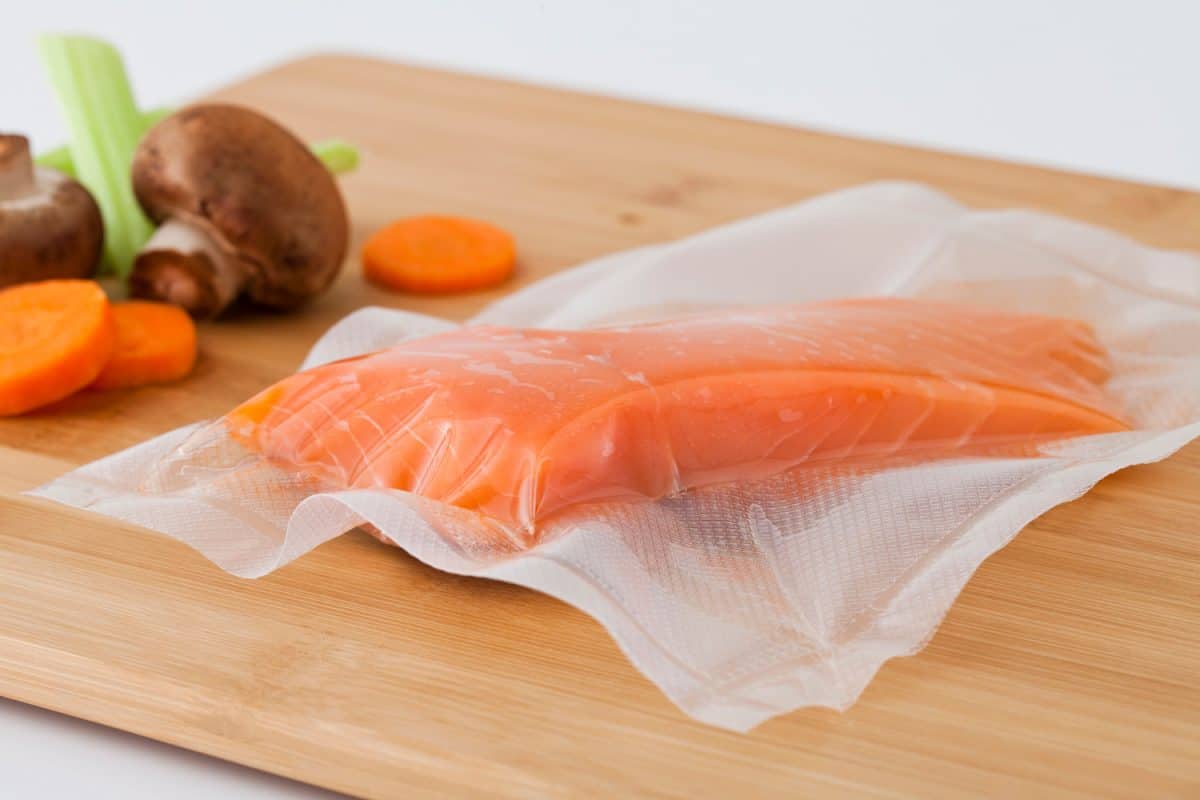
You can safely bake frozen salmon fillets directly from the freezer. However, if you can remember, it's always better to thaw frozen fillets in the fridge the night before you want to cook them.
If you forget to thaw your frozen salmon fillets, it's a good idea to bake them covered in heavy-duty aluminum foil with a thick sauce. This tip helps trap steam, which should give your salmon a moist texture.
After about 15 minutes, remove the aluminum foil and roast for about seven minutes. This final step gives your salmon a nice sear and helps eliminate the risk of a squishy texture.
Find out more on this Amazon link.
Pro tip: There's no need to put frozen salmon in cool water beforehand as you would shrimp.
Could You Air Fry Salmon Fillets?
Air fryers aren't just great for making french fries and donuts—you could also bake salmon fillets! Cooking salmon in the air fryer is similar to baking it in the oven. Set your air fryer to 400° F, put your salmon in a foil pan or your unit's basket, and air fry for about ten minutes.
You can find a more detailed recipe on how to air fry salmon in this video:
Can You Bake Canned Salmon?
If you don't feel like searing salmon patties, why not pop them in the oven? Sure, this may not be the traditional way to cook canned salmon, but there are plenty of recipes that bake salmon patties in the oven.
Check out this popular tutorial to learn how to bake tasty salmon cakes:
For Brilliantly Baked Salmon, Watch Your Timer!
The only way to avoid a burnt salmon dinner is to get your timing right. While your ideal baking time may vary, one-inch thick salmon fillets usually need about ten minutes in a 425° F oven. Be sure to adjust your timing to suit the thickness of your salmon fillets and your oven's heating style. Once you've discovered the temperature that works for your salmon recipes, be sure to make a note of it so you'll never have to guess again!




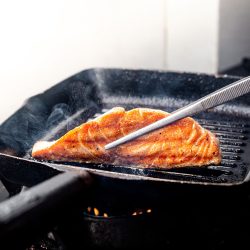

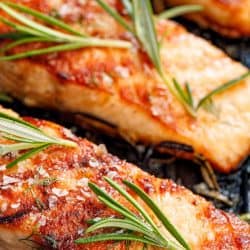
![slicing red salted salmon into pieces, the fish is used for cooking and sushi, What Salmon Is Used For Sushi? [These Are The Best Types!]](https://kitchenseer.com/wp-content/uploads/2022/10/slicing-red-salted-salmon-into-pieces-the-fish-is-used-for-cooking-and-sushi-250x250.jpg)
